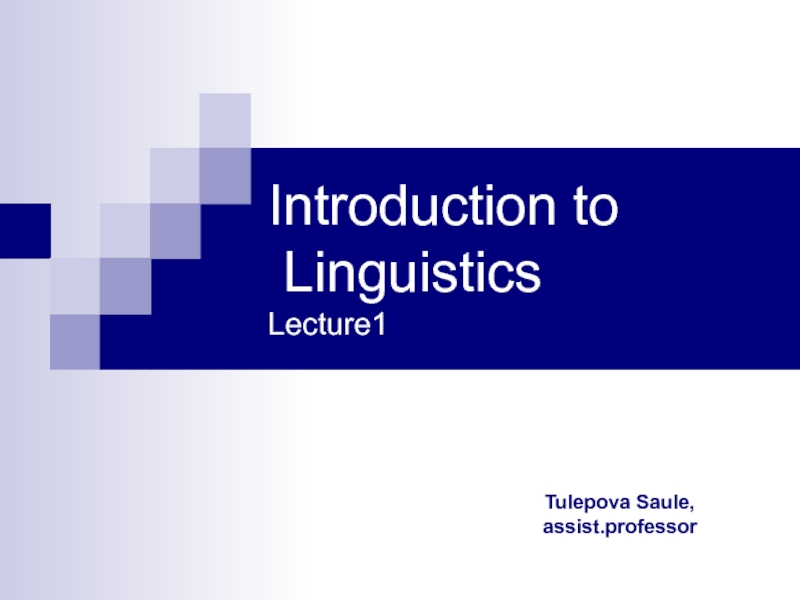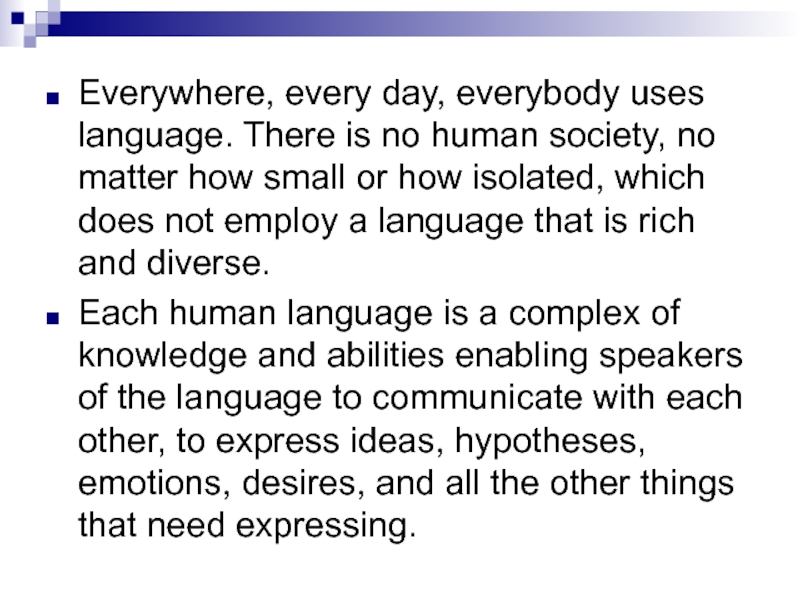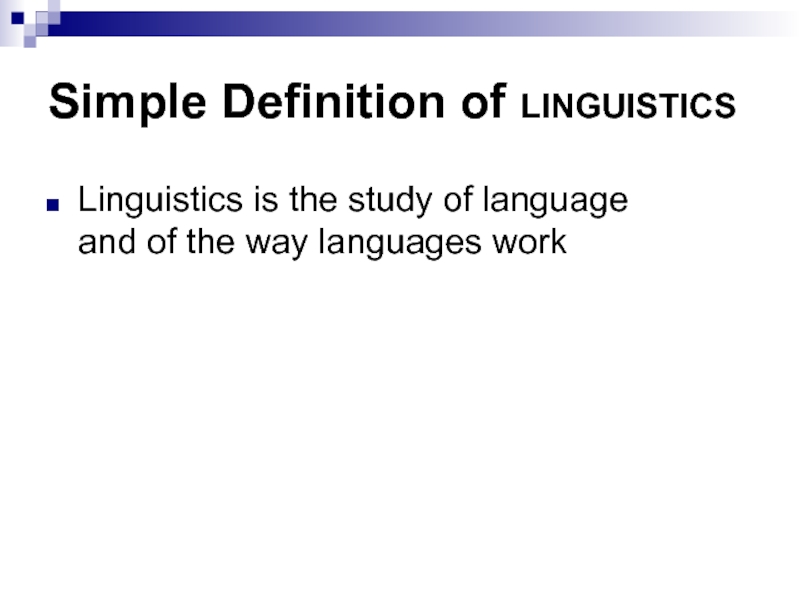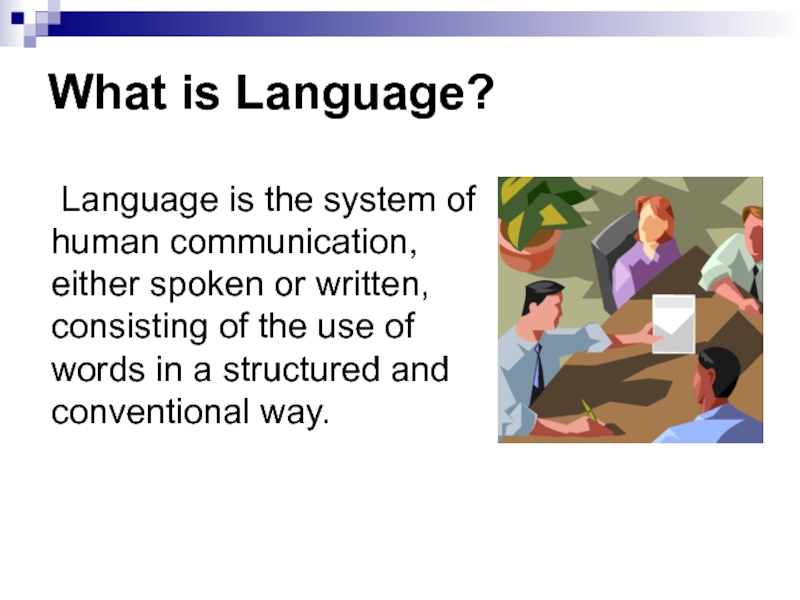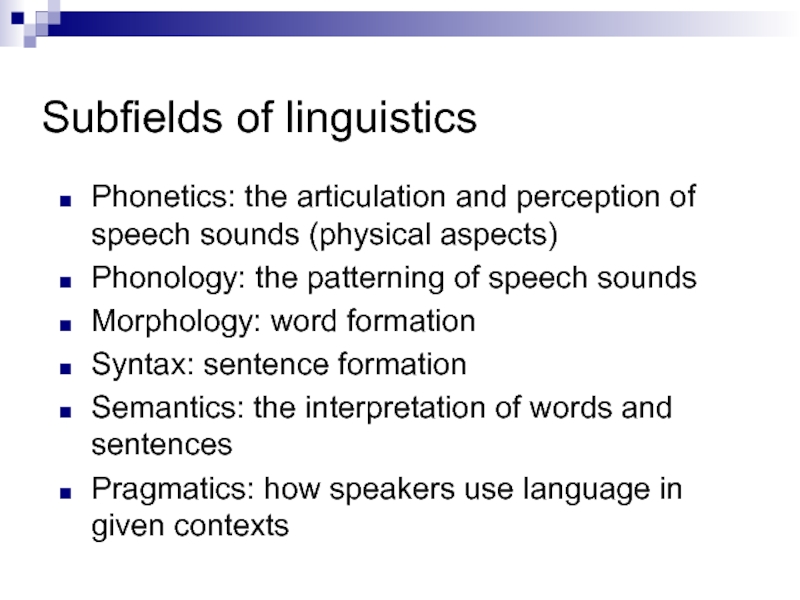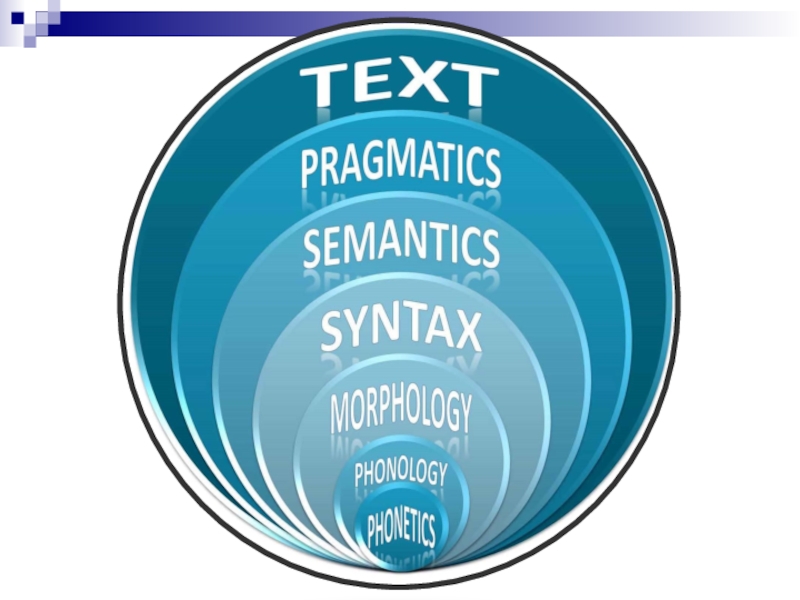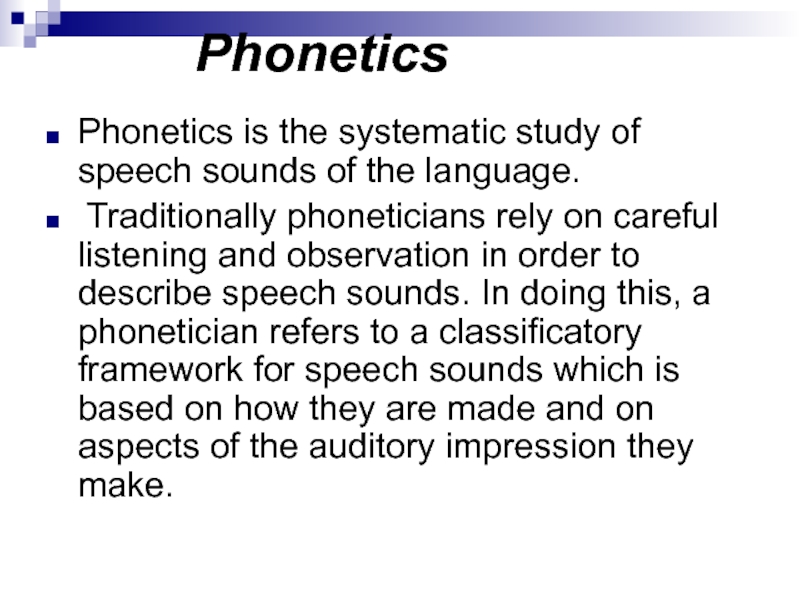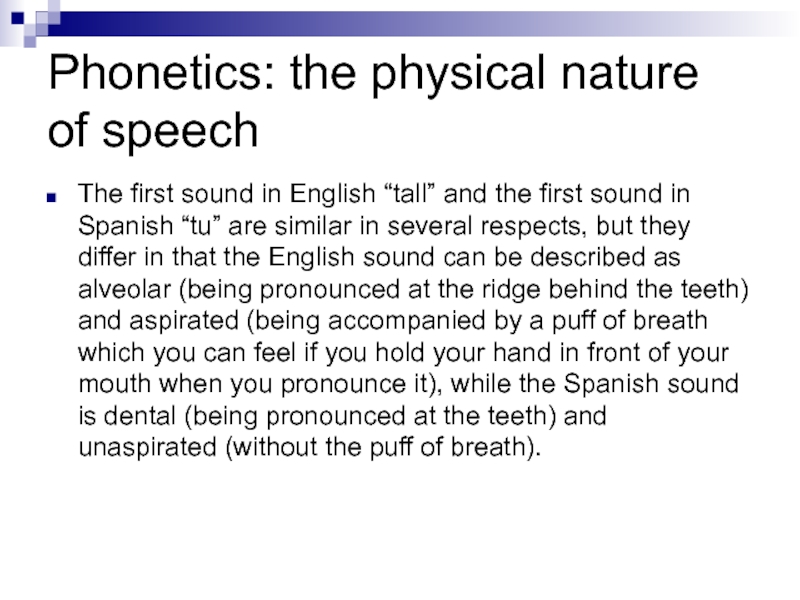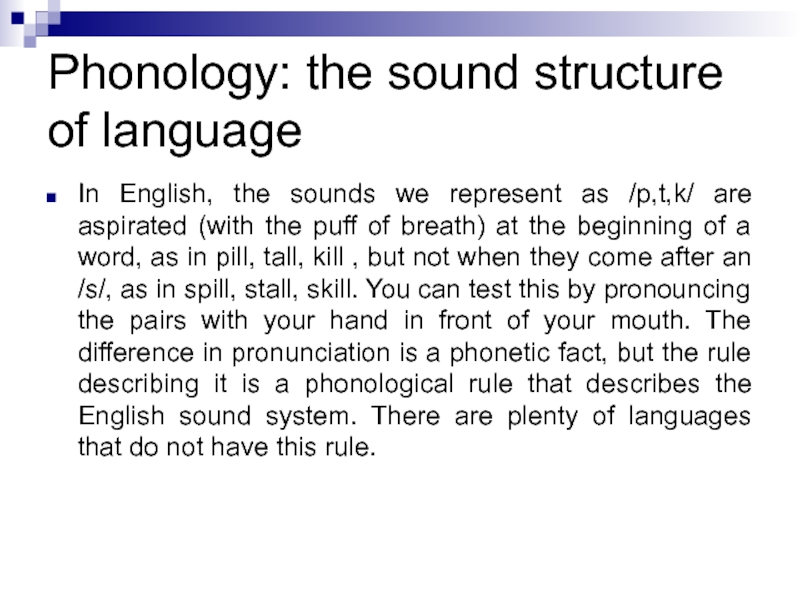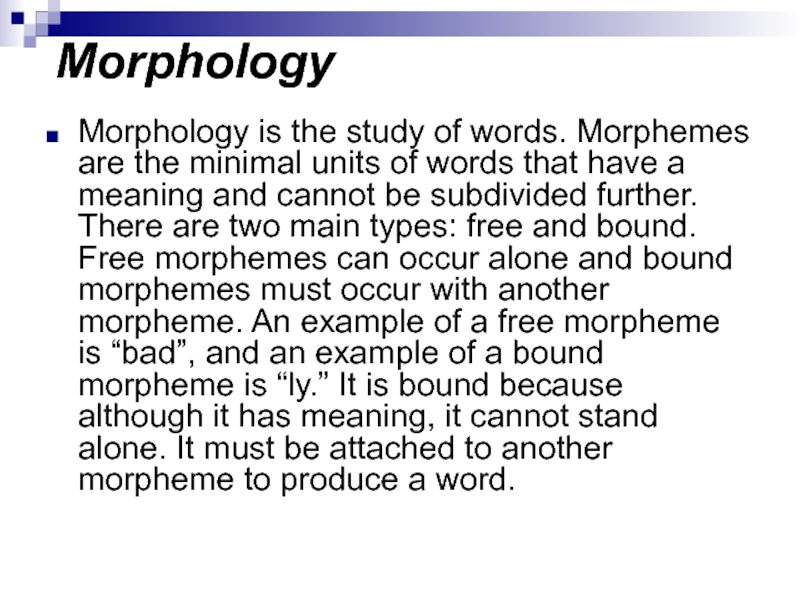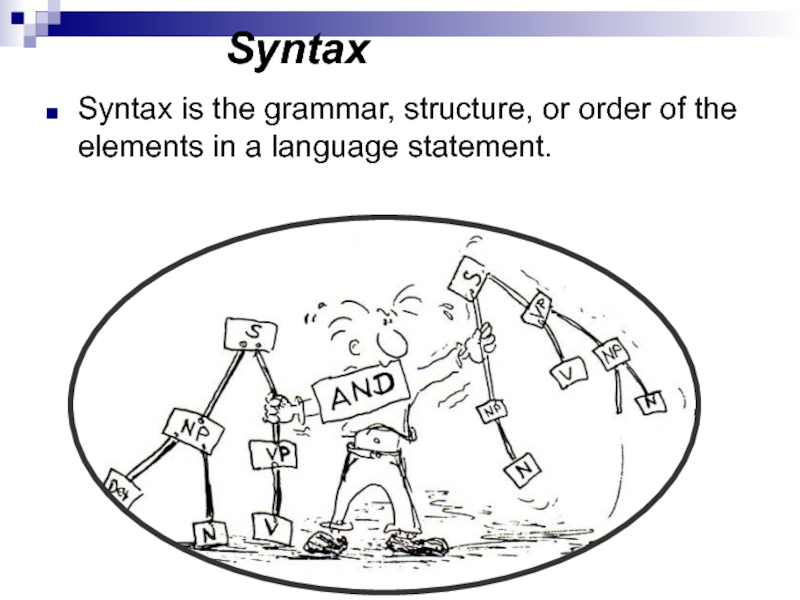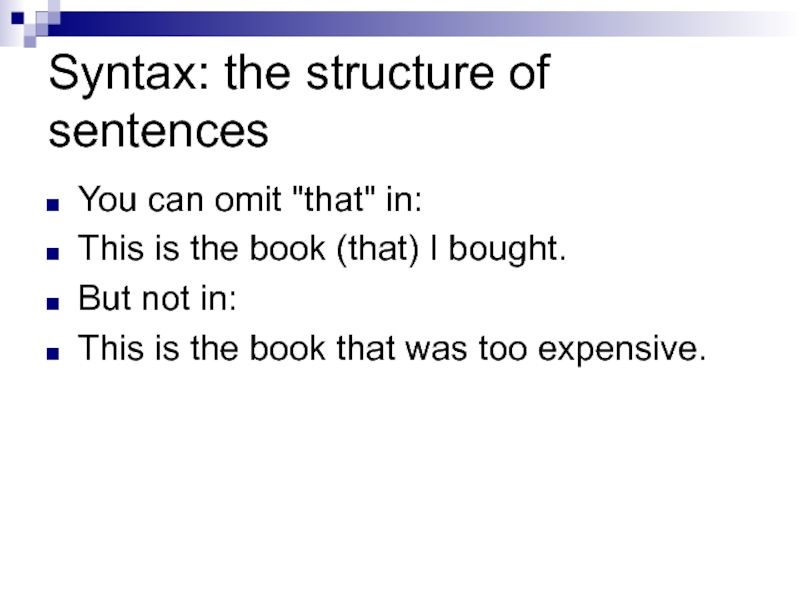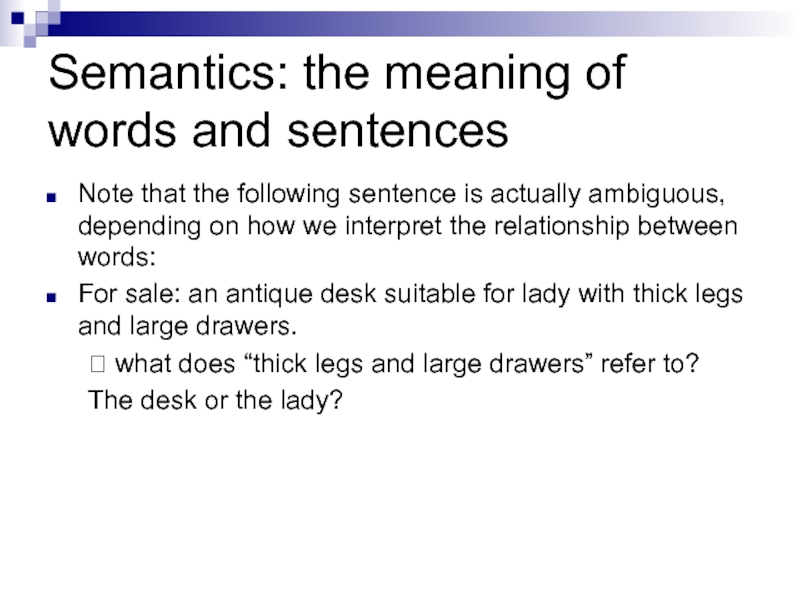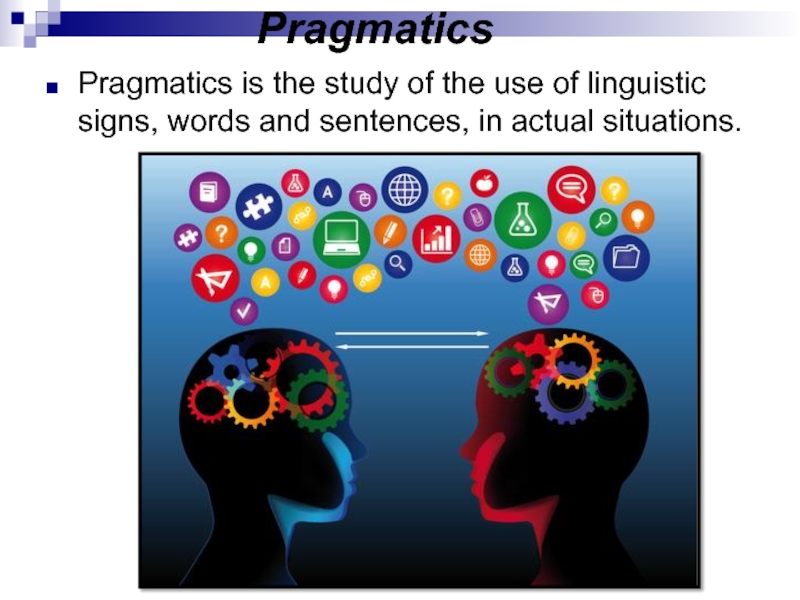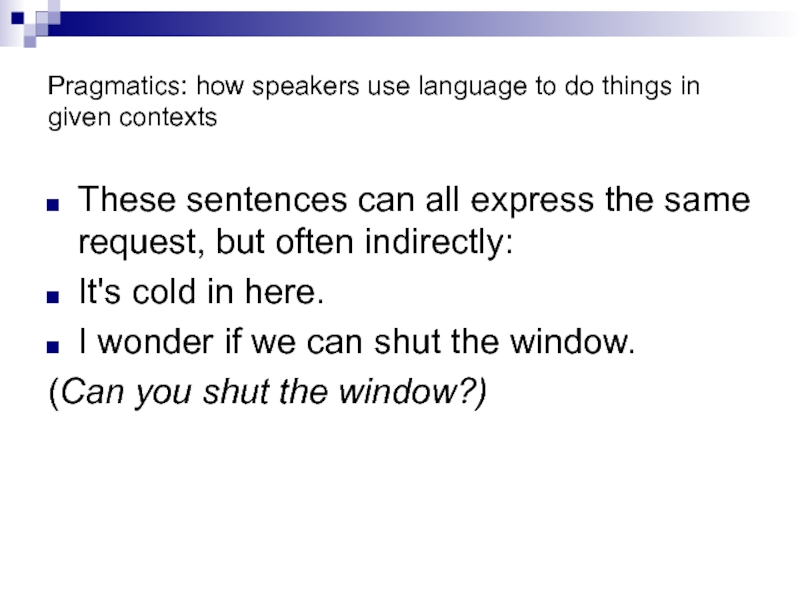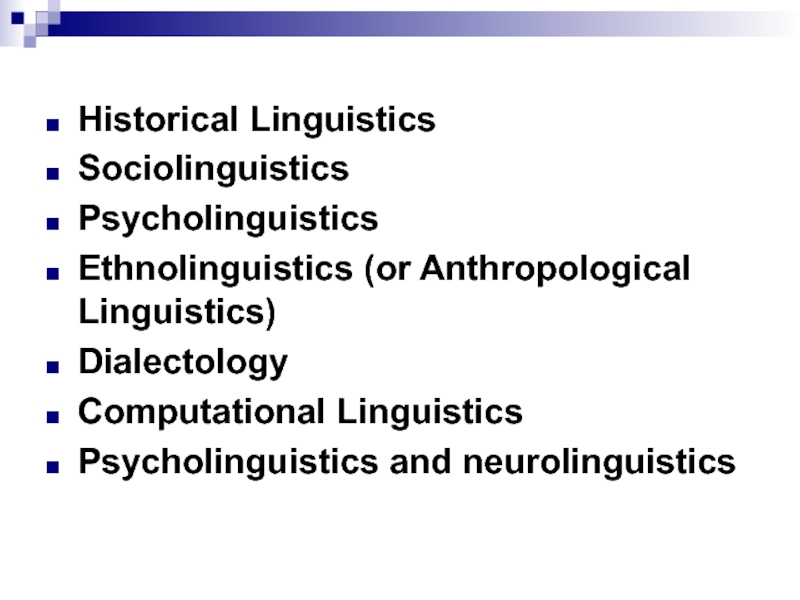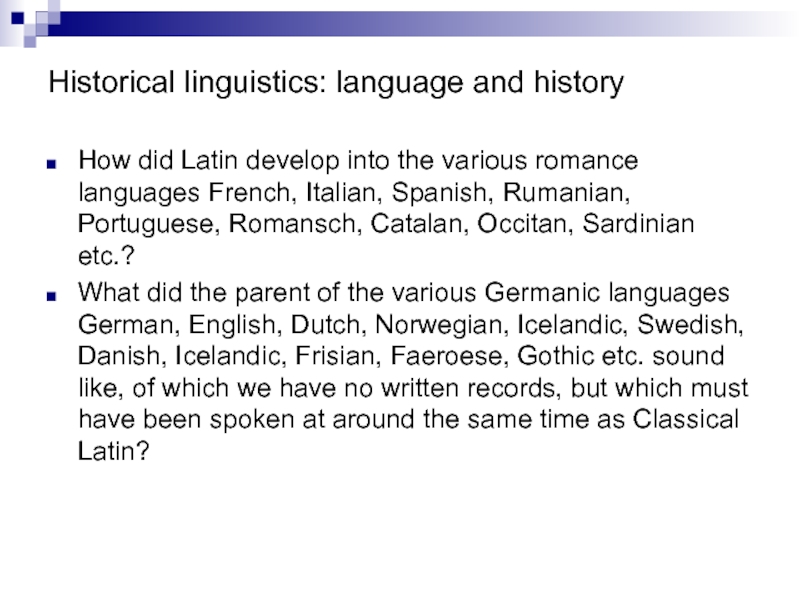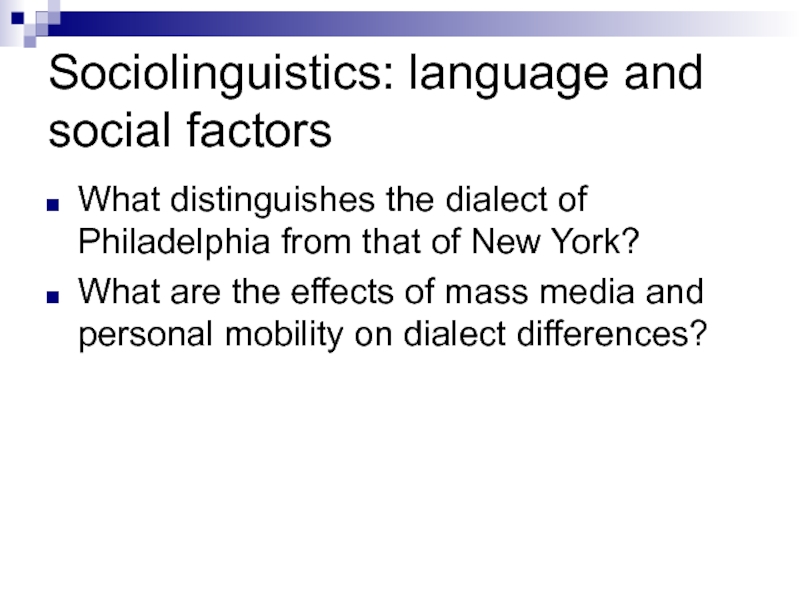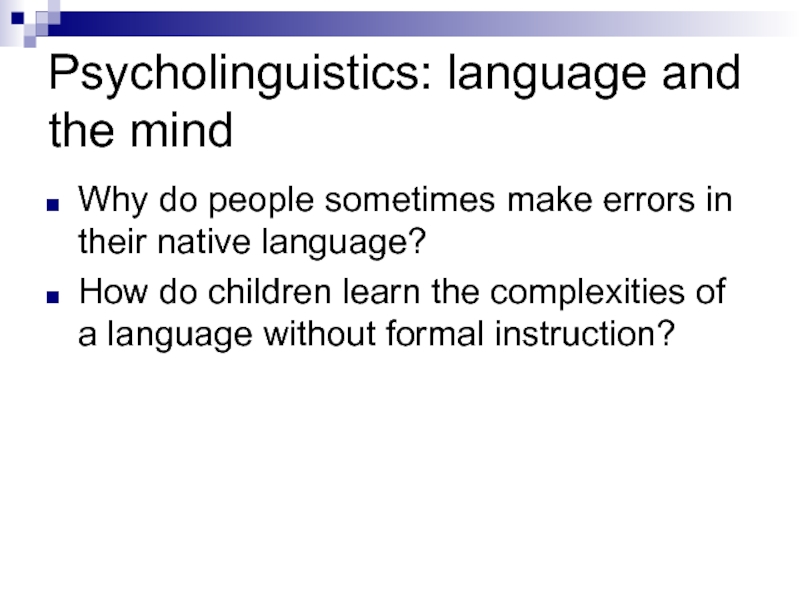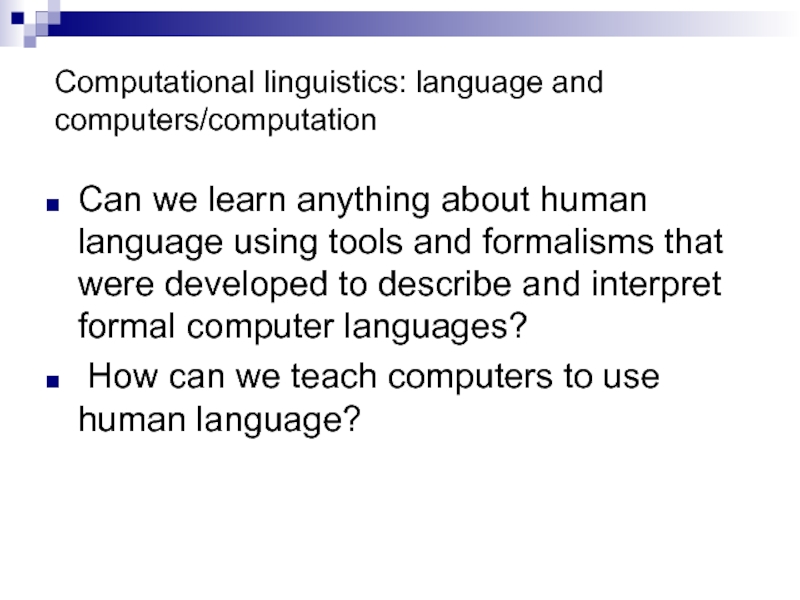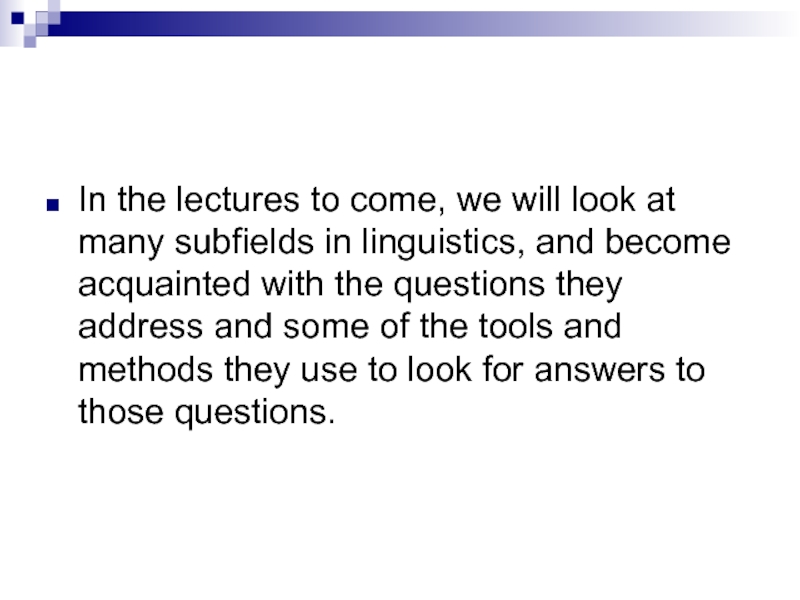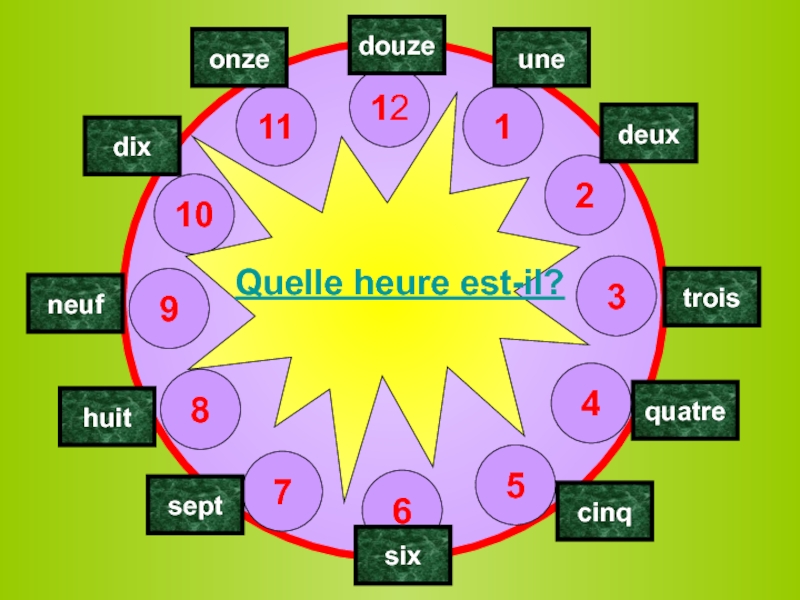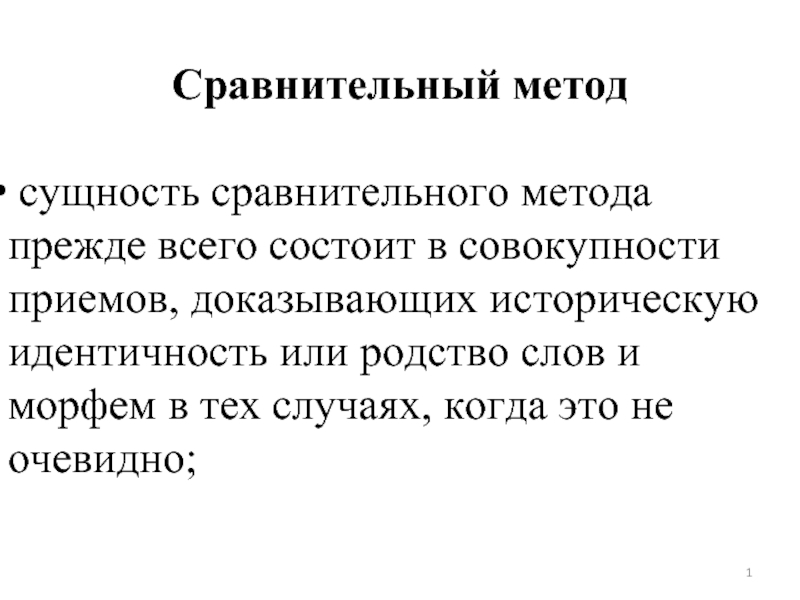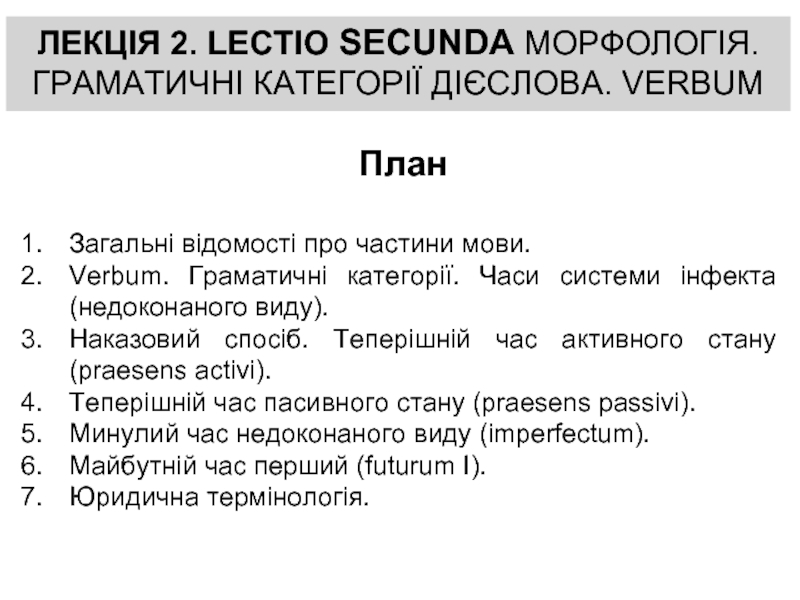- Главная
- Разное
- Дизайн
- Бизнес и предпринимательство
- Аналитика
- Образование
- Развлечения
- Красота и здоровье
- Финансы
- Государство
- Путешествия
- Спорт
- Недвижимость
- Армия
- Графика
- Культурология
- Еда и кулинария
- Лингвистика
- Английский язык
- Астрономия
- Алгебра
- Биология
- География
- Детские презентации
- Информатика
- История
- Литература
- Маркетинг
- Математика
- Медицина
- Менеджмент
- Музыка
- МХК
- Немецкий язык
- ОБЖ
- Обществознание
- Окружающий мир
- Педагогика
- Русский язык
- Технология
- Физика
- Философия
- Химия
- Шаблоны, картинки для презентаций
- Экология
- Экономика
- Юриспруденция
Introduction to Linguistics презентация
Содержание
- 1. Introduction to Linguistics
- 2. Everywhere, every day, everybody uses language. There
- 3. What is Linguistics? The field of scholarship
- 4. Simple Definition of linguistics Linguistics is
- 5. The first principle of linguistics is: Respect people's language behavior, and describe it objectively.
- 6. What is Language? Language is the
- 7. The Creativity Aspect of Language Human language
- 8. Linguistic Knowledge (competence) Knowledge of Words: Knowing
- 9. Linguistic Performance: How you use this
- 10. Subfields of linguistics Phonetics: the articulation and
- 12. Phonetics is the systematic study of
- 13. Phonetics: the physical nature of speech The
- 14. Phonology: the sound structure of language In
- 15. Morphology is the study of words. Morphemes
- 16. Syntax is the grammar, structure, or order
- 17. Syntax: the structure of sentences You can
- 18. Semantics: the meaning of words and sentences
- 19. Pragmatics is the study of the use
- 20. Pragmatics: how speakers use language to do
- 21. Relations of linguistics with other sciences
- 22. Historical Linguistics Sociolinguistics Psycholinguistics Ethnolinguistics (or Anthropological Linguistics) Dialectology Computational Linguistics Psycholinguistics and neurolinguistics
- 23. Historical linguistics: language and history How
- 24. Sociolinguistics: language and social factors What distinguishes
- 25. Psycholinguistics: language and the mind Why do
- 26. Computational linguistics: language and computers/computation Can we
- 27. In the lectures to come, we will
Слайд 2Everywhere, every day, everybody uses language. There is no human society,
Each human language is a complex of knowledge and abilities enabling speakers of the language to communicate with each other, to express ideas, hypotheses, emotions, desires, and all the other things that need expressing.
Слайд 3What is Linguistics?
The field of scholarship that tries to answer the
Слайд 4
Simple Definition of linguistics
Linguistics is the study of language and of the
Слайд 5The first principle of linguistics
is: Respect people's language behavior, and describe
Слайд 6What is Language?
Language is the system of human communication, either
Слайд 7The Creativity Aspect of Language
Human language is creative: allowing novelty and
Слайд 8Linguistic Knowledge (competence)
Knowledge of Words: Knowing the sound units that are
Knowledge of Sentences: Knowing how to form sentences.
Knowledge of the Sound System: Knowing what sounds are in that language and what sounds are not.
Слайд 9Linguistic Performance:
How you use this knowledge in actual speech production
Linguistic Competence:
What you know about a language.
Слайд 10Subfields of linguistics
Phonetics: the articulation and perception of speech sounds (physical
Phonology: the patterning of speech sounds
Morphology: word formation
Syntax: sentence formation
Semantics: the interpretation of words and sentences
Pragmatics: how speakers use language in given contexts
Слайд 12
Phonetics is the systematic study of speech sounds of the language.
Phonetics
Слайд 13Phonetics: the physical nature of speech
The first sound in English “tall”
Слайд 14Phonology: the sound structure of language
In English, the sounds we represent
Слайд 15Morphology is the study of words. Morphemes are the minimal units
Morphology
Слайд 17Syntax: the structure of sentences
You can omit "that" in:
This is
But not in:
This is the book that was too expensive.
Слайд 18Semantics: the meaning of words and sentences
Note that the following sentence
For sale: an antique desk suitable for lady with thick legs and large drawers.
? what does “thick legs and large drawers” refer to?
The desk or the lady?
Слайд 19Pragmatics is the study of the use of linguistic signs, words
Pragmatics
Слайд 20Pragmatics: how speakers use language to do things in given contexts
These
It's cold in here.
I wonder if we can shut the window.
(Can you shut the window?)
Слайд 22Historical Linguistics
Sociolinguistics
Psycholinguistics
Ethnolinguistics (or Anthropological Linguistics)
Dialectology
Computational Linguistics
Psycholinguistics and neurolinguistics
Слайд 23Historical linguistics: language and history
How did Latin develop into the various
What did the parent of the various Germanic languages German, English, Dutch, Norwegian, Icelandic, Swedish, Danish, Icelandic, Frisian, Faeroese, Gothic etc. sound like, of which we have no written records, but which must have been spoken at around the same time as Classical Latin?
Слайд 24Sociolinguistics: language and social factors
What distinguishes the dialect of Philadelphia from
What are the effects of mass media and personal mobility on dialect differences?
Слайд 25Psycholinguistics: language and the mind
Why do people sometimes make errors in
How do children learn the complexities of a language without formal instruction?
Слайд 26Computational linguistics: language and computers/computation
Can we learn anything about human language
How can we teach computers to use human language?
